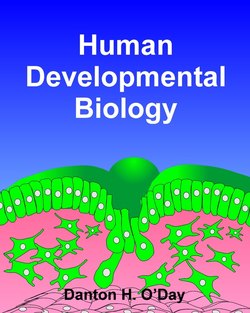Читать книгу Human Developmental Biology - Danton Inc. O'Day - Страница 8
Germ Cell Markers
ОглавлениеCurrent research still uses alkaline phosphatase staining to study primordial germ cell migration in various mammals including humans. The method is limited because it requires the embryo to be fixed, sectioned and stained. More recently, however, cellular labeling (e.g., GFP; green fluorescent protein linked to a germ cell specific protein) and use of staining with monoclonal antibodies directed against germ cells added further insight into this subject. For example, stromal cell derived factor-1 (SDF-1) and its chemokine receptor CXCR-4 are essential for germ cell migration. GFP-SDF1 (GFP coupled to SDF1) allow researchers to follow living primordial germ cells within the embryo.
As detailed below, transplantation studies have shown that the germ cell lineage begins in the posterior region of the epiblast in the mouse, a model for the study of human development. The pictures below (Figure 2.2) show that PGCs are subsequently detected in the yolk sac, a long distance—in cellular terms—from the future ovaries and testes. They migrate up the mesentery (i.e., splanchnopleure) ultimately exiting left and right to enter the just-forming genital ridges. Always remember, that as these events happen the embryo is continuously growing and changing its shape. So a structure or tissue relationship that was present early in a developmental process may not be present later or may have changed in its organization and appearance. While we should keep this in mind, our goal is to understand the events and how they occur. It is important not to get overly concerned about the complexity of these ongoing events in terms of the whole embryo or to let them overshadow your understanding of the specific events that are under discussion.
Figure 2.2. Migration of PGSs in the human embryo.
